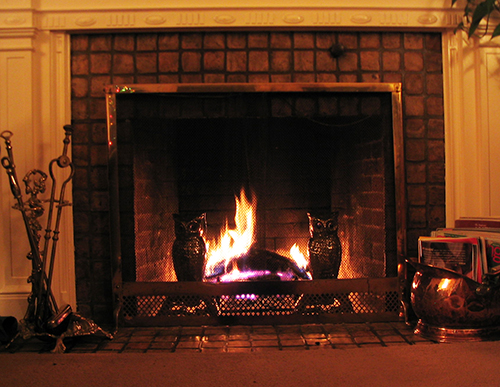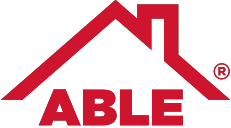If you have a fireplace, you’re probably already wishing the weather would get cool enough to enjoy it. There’s more to being prepared than just stockpiling wood. Whether you have a wood-burning, electric, or gas fireplace, fall is the time to make sure it’s ready for cold weather use. Here’s how to prepare your fireplace for the first fire of the season.
Clean the Exterior
 Clean any louvers or grills to remove any debris that built up during the off season. Pet hair and dust might have settled in crevices and can block air flow when you light your first fire. Use a vacuum hose or loose brush to open them again.
Clean any louvers or grills to remove any debris that built up during the off season. Pet hair and dust might have settled in crevices and can block air flow when you light your first fire. Use a vacuum hose or loose brush to open them again.
Clean the brass around a fireplace by applying a thin film of tomato paste and letting it dry. After an hour or so, wash it off with hot soapy water to reveal a brilliant shine. Commercial brass polish works too, but avoid using anything abrasive.
Arrange for a Chimney Inspection
If you have a wood-burning fireplace, have your chimney cleaned and inspected every year to remove flammable creosote buildup. Check your fireplace’s masonry to see if any cracks developed between joints. If your fireplace or chimney show signs of damage, use a professional mason for the repairs.
Check your fireplace damper to see if it has any obstructions that keep it from opening and closing. Make sure your chimney cap is secure and that its protective screening is still in good shape. Screening keeps pests from entering your home, and can sometimes corrode when exposed to water and heat.
If you have a gas fireplace with a pilot light, have it serviced regularly. Unvented gas units might have an oxygen depletion sensor that needs to be blown off with a can of compressed air.
Complete Outdoor Maintenance
Tree limbs growing close to your chimney can be a fire hazard. Limbs can also fall on your roof to damage shingles and other roof structures. Have your trees pruned to protect your home.
Maintenance During Use
Ashes build up quickly when you use your wood-burning stove. Empty your firebox every time ashes are more than an inch deep, but be careful when you do. Hot coals can last more than three days after your last fire, and they might be hiding in the ash. Sweep ashes out of your fireplace and add them to compost piles or spread them on your garden.
If you notice masonry issues when you inspect your fireplace, Able Roof repairs brick, block, stone and stucco. Cracked chimney crowns are susceptible to water damage that can lead to expensive repairs. Contact Able Roof for a free inspection from our masonry experts.








